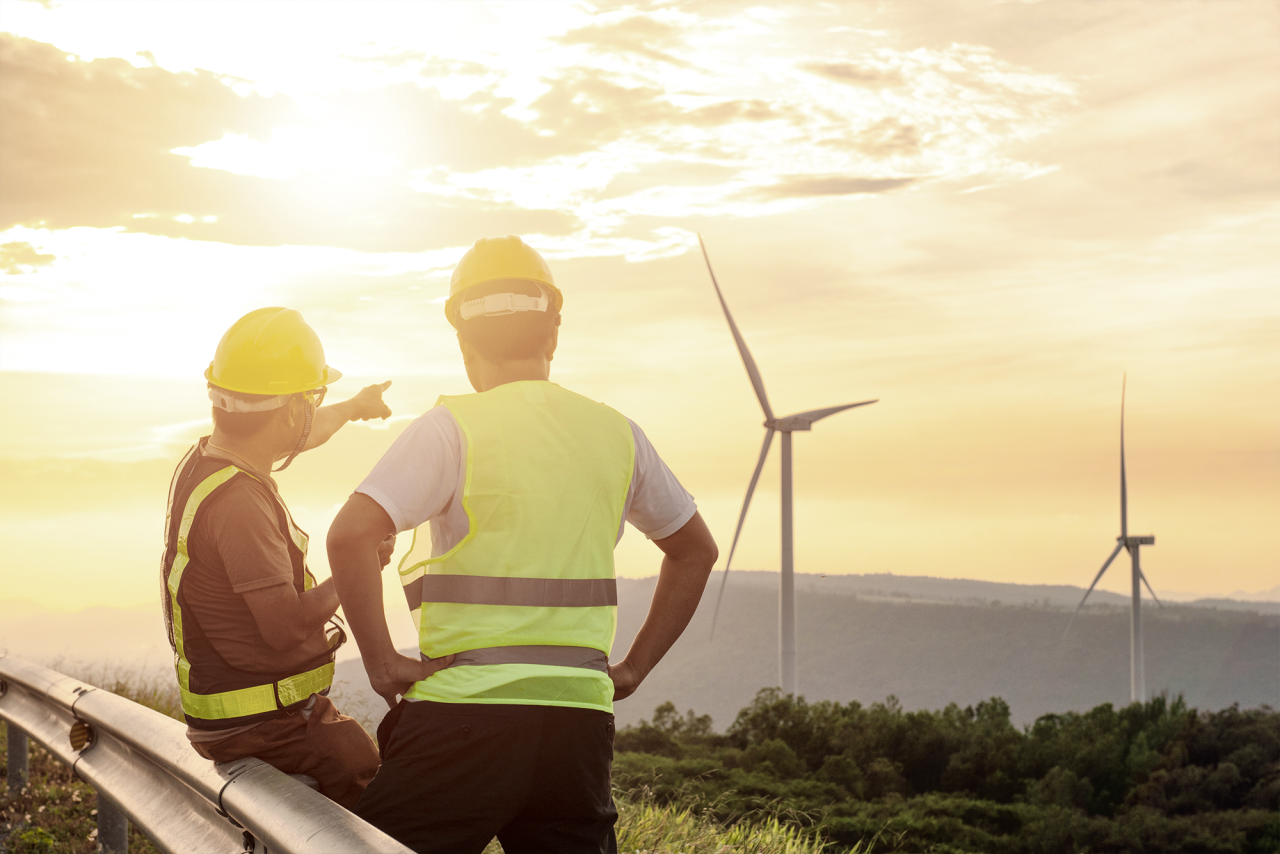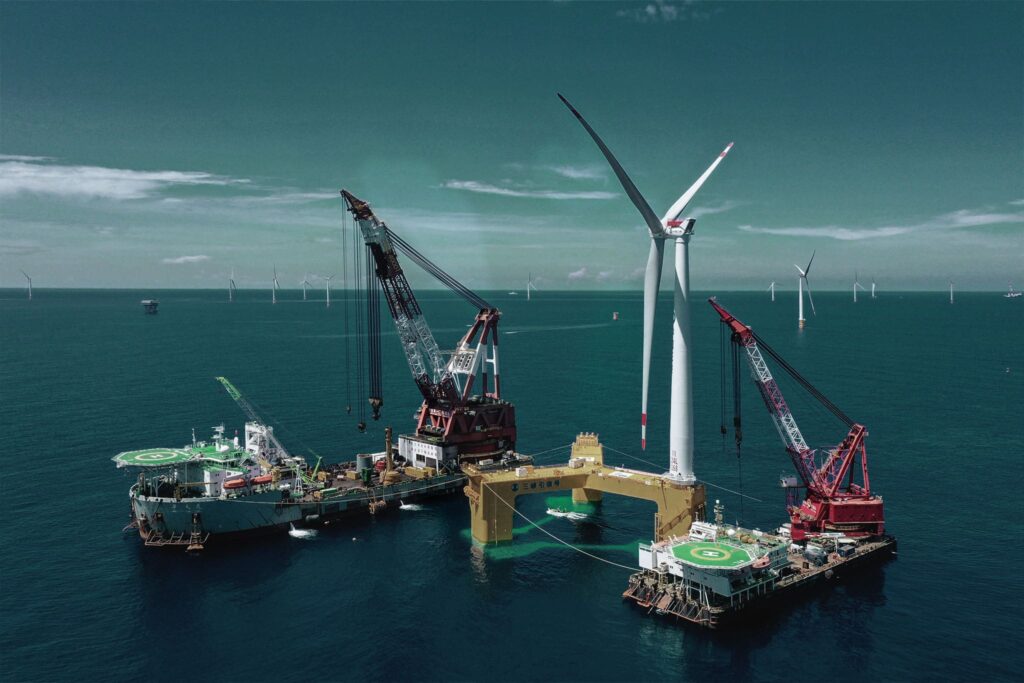It’s been a great couple of years for wind farm construction projects—Africa, Europe, Latin America, and the Middle East have all had more onshore wind installations than ever before.
And while wind farm construction shares many of the same qualities as other projects, it also comes with some unique challenges.
When it comes to wind energy construction and development, there’s no single best practice, but there are many good practices you can follow.
Try implementing these three good practices on your next wind farm construction project to promote better efficiency and safety.
Webinar on-demand: The best practices to streamline quality inspections & communication through different stages of Offshore Wind Farm development
1. Start with better pre-construction processes
Efficient pre-construction planning is crucial if you want your wind farm construction projects to be successful.
Other than performing due diligence with site assessments and infrastructure planning, there are other ways to ensure your pre-construction phase goes smoothly:
- Create a single source of truth. Throughout the pre-construction stage of a wind farm construction project, it’s not uncommon for data to be siloed (stuck in spreadsheets, emails, WhatsApp messages, etc.). This disconnect delays information sharing, priming teams to make costly mistakes and miss deadlines.
- Automate manual processes. Wind farm construction projects suffer from many of the same inefficiencies as other commercial projects – teams get stuck working on tedious, manual processes. Implementing cloud-based construction management software can help your team spend more time on important pre-construction tasks instead of getting bogged down with data entry.
- Foster better collaboration. Setting up your wind farm construction project for success means getting every stakeholder on the same page from the beginning. This means finding a system to enable communication and collaboration between teams and eliminate data silos across offices to avoid risks and make better decisions.
2. Consider how the weather will affect your project
While the time of year affects all construction projects, wind farm construction projects have some specific scheduling needs. You’ll have to consider:
- The weather: Scheduling turbine lifts is much more difficult in windy or wet weather, and storms can further restrict on-site access.
- Flood events: Proper site drainage is essential for wind farm construction projects—failure to plan for them can result in problems from delays to pollution.
- Habitat management: You’ll need to protect (and possibly restore) the habitat where the wind farm is located; this is dependent on the time of year, whether or not livestock is present, etc.
- Visibility conditions: Heavy fog, rain, and blizzard conditions can significantly increase risks on any construction site but are particularly dangerous when working on wind farm projects.
- Wildlife activity: Breeding bird season, the activity of protected species, and deer grazing patterns all present unique risks to wind farm construction projects, and you must minimise your impact on the local wildlife.
- Waste management options: Wind farm construction projects must manage waste efficiently to minimise the hazards associated with the movement, use, and disposal of on-site waste.
More to read: 7 key benefits of Lean construction for wind farms
 3. Design access tracks specific to the location and requirements
3. Design access tracks specific to the location and requirements
Access tracks play an important role throughout wind farm construction projects, from the initial installation and hauling of wind turbine parts to its long-term operational and maintenance needs.
Designing and implementing efficient access tracks means covering:
- Pre-construction access track considerations: There are a few pre-construction points to consider, including the site’s topography and ground conditions. You want to ensure that access tracks avoid bodies of water and perform a thorough ground investigation that includes topsoil probing and trial pitting.
- Access track design: When you get into the details of designing your access tracks, you’ll have to take into account limits set by delivery contractors and turbine suppliers for alignment gradients, load capacities, and track widths. You’ll also need to look into any potential issues with track gradients, peat stability, and temporary construction stages.
- Access track construction: Wind farm construction projects generally have two options for creating access tracks: floating tracks and cut-and-fill tracks. With either method, it’s important to carefully monitor wind farm tracks for standing water, which can result in potholes in the running surface.
Free eBook: Guide to a digitised QHSE organisation
Standardise your processes to ensure quality, safety, and efficiency
With onshore and offshore wind farm construction projects expanding rapidly, efficient building practices are more important than ever.
The key to ensuring on-site and off-site quality, safety, and efficiency is standardising your processes with digital tools.
Cloud-based software like LB Aproplan can help stakeholders of wind farm construction projects—from designers and developers to subcontractors—streamline their communication and quality processes.
- Mobile site inspections allow you to create snags and sync your punch lists from anywhere.
- Standardised QHSE checklists make capturing site issues and removing hazards fast and easy.
- One-click reports help you zero in on snags, determine the fault for delays, and mark up red flags.
- Automated workflows reduce costly mistakes, track project performance, and increase ROI.
Stop wasting valuable time and resources managing defects, manually setting up projects, and chasing documents with less-than-perfect audit trails—book your demo of LB Aproplan to see how your wind farm construction project can benefit from better quality, safety, and efficiency.




